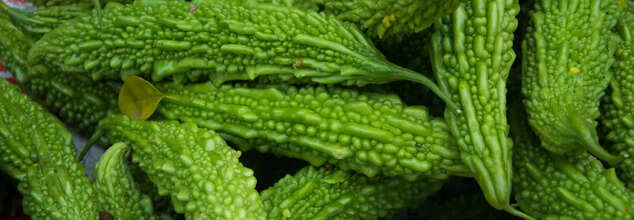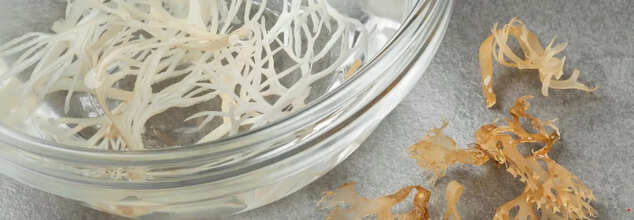
Credit: Canva
Highly Glycated Foods Accelerating Risk Of Diabetes-How To Naturally Prevent It
Diabetes impacts thousands of people every year. India is considered the diabetes capital of the world with over 101 million people suffering from the chronic disease. But you must not be mistaken to think that the prevalence of this chronic health condition is less in other countries, particularly the US, UK etc. Recently, it has been discovered that the level of glycation in food items can impact diabetes.
The Indian Medical Council Of Research (IMCR) And Medical Research Foundation, Chennai together conducted a study and discovered that a low AGE (Advanced Glycation End Products) diet could help lower the risk of diabetes. The reverse is true for high-age items. Notably, AGEs are harmful compounds formed when certain foods are cooked at high temperatures like during grilling, frying, toasting etc. Food items with high AGE include vada pav, samosa, chips etc.
But First Let's Understand How Does Diabetes Impact Human Bodies?
Diabetes is a chronic disease that occurs when your blood glucose, also called blood sugar, is too high. Glucose is your body’s main source of energy. Your body can make glucose, but glucose also comes from the food you eat. Insulin is a hormone made by the pancreas that helps glucose get into your cells to be used for energy. If you have diabetes, your body doesn’t make enough—or any—insulin or doesn’t use insulin properly. Glucose then stays in your blood and doesn’t reach your cells.
Study Showed Increase In Insulin Sensitivity
The study published in October 2024 in the International Journal of Food Sciences and Nutrition revolved around two groups of participants who each followed a high AGE and a low AGE diet for twelve weeks. The study used a crossover method, implying that each participant tried both diets, allowing researchers to compare the effects within the same group of people. The findings, which were published in the International Journal Of Food Sciences and Nutrition, found that a low AGE diet increased participant's insulin sensitivity significantly.They also demonstrated lower blood sugar levels 30 minutes after meals, along with reduced levels of AGEs and inflammatory markers in their blood. In contrast, the high-AGE diet did not provide these health advantages and was associated with elevated levels of AGEs and inflammation, which may increase the risk of heart disease and diabetes.
Here's How You Can Manage Diabetes Naturally
Incorporating natural ingredients into your daily routine can help mitigate some of the adverse effects of steroids on blood sugar levels. Here are some natural ways to support blood sugar management:
Cinnamon: Known for its ability to enhance insulin sensitivity, cinnamon can help regulate blood sugar levels. Add a teaspoon to your morning oatmeal or smoothie.
Turmeric: This spice contains curcumin, which has been shown to improve insulin resistance. Incorporate turmeric into your cooking or consider a turmeric supplement.
Fenugreek Seeds: These seeds are rich in soluble fibre, which helps control blood sugar levels. Soak a tablespoon of fenugreek seeds in water overnight and consume them on an empty stomach.
Ginger: Ginger has anti-inflammatory properties and can help lower blood sugar levels. Add fresh ginger to teas or meals.
Green Tea: High in antioxidants, green tea can aid in blood sugar regulation. Drink a cup of green tea daily to help manage glucose levels.

Credit: Canva
Can Bitter Gourd Help People Manage Diabetes Better?
Karela, or bitter gourd, is undoubtedly one of the most hated vegetables in the world. Called momordica charantia by the scientific community, this vegetable is infamous for its bitter taste and is used in Asian, African and Carribean cuisines. Lesser known is the fact that for centuries, it has been cherished in traditional medicine due to its powerful effects on the body. Interestingly, this vegetable traces its origin to India.
While its health benefits are known across the world, there is empirical evidence to testify that drinking its juice every day can help people control diabetes. Bitter Gourd contains compounds such as charantin and polypeptide-p that mimic insulin activity. These properties can contribute to improved blood sugar regulation. The vibrant green veggie is also rich in antioxidants, which help combat free radicals and may reduce oxidative stress.
A study published in the International Journal of Molecular Science in February 2023 suggests that it contains bioactive compounds with hypoglycemic properties that help regulate blood sugar levels in individuals with type 2 diabetes. These compounds may work through multiple mechanisms, such as improving insulin sensitivity and reducing glucose absorption.
There are other studies to support the same. However, these studies on the effects of bitter gourd have limitations, including small sample sizes and inconsistent methodologies. More rigorous clinical trials are needed to confirm its effectiveness and safety. Despite this, bitter gourd remains a promising natural and cost-effective.
However, many studies on the effects of bitter gourd have limitations, including small sample sizes and inconsistent methodologies. More rigorous clinical trials are needed to confirm its effectiveness and safety.
What Are Other Benefits Of Bitter Gourd?
One of the most well-known benefits of bitter gourd is that it is rich in dietary fibre, which aids digestion and slows the absorption of sugar in the bloodstream. This helps to prevent spikes in glucose levels after meals. Bitter gourd is also rich in antioxidants like vitamin C, which help combat oxidative stress and reduce inflammation in the body. This can be particularly beneficial in preventing chronic diseases such as heart disease and certain types of cancer. Additionally, the vegetable's high fibre content aids in digestion, promoting regular bowel movements and helping to cleanse the digestive tract. It can also help with weight management by providing a feeling of fullness and reducing overall calorie intake.
The bitter compounds in bitter gourd, particularly momordicin, have also been shown to support liver health by enhancing the production of bile, which is essential for digesting fats. This detoxifying effect can improve liver function and overall metabolic health. Moreover, bitter gourd has been found to have antimicrobial properties, which can help fight off infections. It also boosts the immune system, making the body more resilient against illness.

Credits: Canva
Why Limiting Sugar In The First 1,000 Days Of A Child Matters For Lifelong Health
From fruit snacks to juice boxes, sugary foods are deeply ingrained in modern childhood. We cannot think of our childhood without sweets, desserts and candies. This is also when many parents unknowingly introduce their children to excessive sugar early on. They do not realize the long-term health implications it bears. However, thanks to the emerging research, it has now brought into light that the first 1,000 days of life, starting from conception, are crucial in shaping a child's health, including their risk for chronic diseases like diabetes and hypertension.
What Is The Link Between Early Sugar Intake And Chronic Disease
Last year, in journal Science was published that analyzed historical data from World War II-era Britain. This was when sugar was rationed. It was led by economist Tadeja Gracner, the research found that individuals who experienced early-life sugar restrictions had significantly lower rates of Type 2 diabetes and hypertension later in life.
Using the data from UK Biobank, researchers have examined the health records of over 60,000 individuals born between 1951 and 1956. The findings revealed:
- A 35% lower risk of Type 2 diabetes and a delay in disease onset by four years.
- A 20% lower risk of hypertension and a delay in disease onset by two years.
Higher sugar consumption post-rationing was linked to increased inflammation, poor metabolic health, and a greater likelihood of conditions like high cholesterol and arthritis.
Why Is Early Nutrition Important For Health?
A pediatric obesity specialist at Cincinnati Children’s Hospital, Robert Seigel emphasized that nutrition in the womb and early childhood plays a defining role in long term health. “You are not only what you eat, you are what your mom eats,” he explains. Early exposure to high sugar levels can influence taste preference, it makes children more likely to crave and consume sugary foods throughout life.
Gracner's research also supports this and suggests that individuals who consumed less sugar in early childhood may develop a reduced preference for sweetness. It could potentially lower their lifelong sugar intake.
What Is The Impact Of Sugar?
As per the American Academy of Pediatrics (AAP) and Mayo Clinic has highlighted the importance of avoiding added sugars, which are also commonly found in processed foods such as pasta sauces, crackers, and packaged drinks. Unlike naturally occurring sugars in fruits and dairy, added sugars like high fructose corn syrup, sucrose and glucose are also linked to weight gain, metabolic issues and disorders, and insulin resistance.
The AAP also notes that sugar constitutes around 17% of children's daily diets, which means sugar drink accounts for half of that intake. In order to promote better health among children, AAP recommended:
- No added sugar for children under 2 years.
- Less than 25 grams (about 6 teaspoons) of added sugar per day for children over 2.
Following the National Dietary Guidelines, which advise keeping added sugar intake below 10% of total daily calories at any age.
There is also a "95210" guideline that is developed by Dr Alicia Hartung, also recommended by Pediatric Seven Abelowitz that provides practical steps for parents:
- 9 hours of sleep per night
- 5 servings of fruits and vegetables daily
- 2 hours or less of screen time
- 1 hour of physical activity
- 0 sugary drinks

Credit: Canva
Does Eating Sea Moss Boost Your Immunity?
Sea moss (Chondrus crispus), commonly known as Irish moss, is a type of red algae that grows along the Atlantic coasts of Europe and North America. It has gained popularity for its potential health benefits, particularly for immune support, thyroid function, gut health, and heart health. Available in gel, powder, and supplement forms, sea moss is rich in essential nutrients like iodine, making it a valued addition to many diets. However, while it offers numerous benefits, it also comes with certain risks.
Potential Health Benefits of Sea Moss
Boosts Immune Function
Sea moss is packed with vitamins and minerals, including vitamins C and D, which support immune health. Some studies suggest that its anti-inflammatory and antimicrobial properties may help the body fight infections, though further research is needed to confirm its effectiveness.
Supports Thyroid Health
The thyroid gland plays a crucial role in regulating metabolism, and sea moss provides iodine, a key mineral required for the production of thyroid hormones. Adequate iodine intake can help maintain thyroid function and prevent conditions like hypothyroidism.
Promotes Gut Health
As a source of prebiotics, sea moss can nourish beneficial gut bacteria, aiding digestion and overall gut health. Prebiotics support a balanced microbiome, which is essential for metabolic processes and immune function.
Enhances Libido
Sea moss contains zinc, a mineral known for its role in hormone production and sexual health. Additionally, its iodine content helps regulate thyroid function, which can influence libido and energy levels.
May Help Prevent Parkinson’s Disease
Some preliminary research suggests that sea moss contains compounds that may protect brain cells. An animal study indicated that sea moss extracts helped improve dopamine-producing cell function in worms, potentially offering insights into neurodegenerative disease prevention. However, human studies are necessary to validate these findings.
Provides Essential Nutrients
Sea moss is a rich source of various vitamins and minerals, including calcium, iron, magnesium, phosphorus, potassium, selenium, and vitamins A, C, D, E, and K. While some claims suggest it contains 92 essential nutrients, more research is needed to confirm its exact nutritional composition and bioavailability.
Supports Heart Health
Sea moss is high in soluble fiber, which aids digestion, promotes satiety, and helps regulate cholesterol levels. By reducing LDL (“bad”) cholesterol, it may lower the risk of heart disease. Additionally, its antioxidant properties help combat oxidative stress, which contributes to cardiovascular issues.
Nutritional Profile
Two teaspoons of sea moss provide:
Calories: 4.9
Carbohydrates: 1.2 g
Fiber: 0.1 g
Protein: 0.2 g
Sodium: 6.7 mg
Fat: 0.02 g
Potential Risks of Sea Moss Consumption
Heavy Metal Contamination
Sea moss may absorb heavy metals like arsenic and mercury if harvested from polluted waters. While levels are generally low, regular consumption from unregulated sources could pose health risks.
Excessive Iodine Intake
Consuming too much sea moss can lead to excessive iodine intake, disrupting thyroid function. Both iodine deficiency and excess can cause thyroid disorders, including hyperthyroidism and hypothyroidism. Consulting a healthcare provider can help determine safe consumption levels.
How to Incorporate Sea Moss into Your Diet
Blend sea moss powder into smoothies, teas, or juices.
Add it to soups, stews, or baked goods.
Sprinkle dried sea moss over yogurt or oatmeal.
Sea moss is a nutrient-dense superfood with potential health benefits for immunity, thyroid health, gut function, and heart health. However, due to its iodine content and potential contamination risks, it should be consumed in moderation. Before adding sea moss supplements to your diet, consult a healthcare professional to ensure safe and effective usage.
© 2024 Bennett, Coleman & Company Limited

